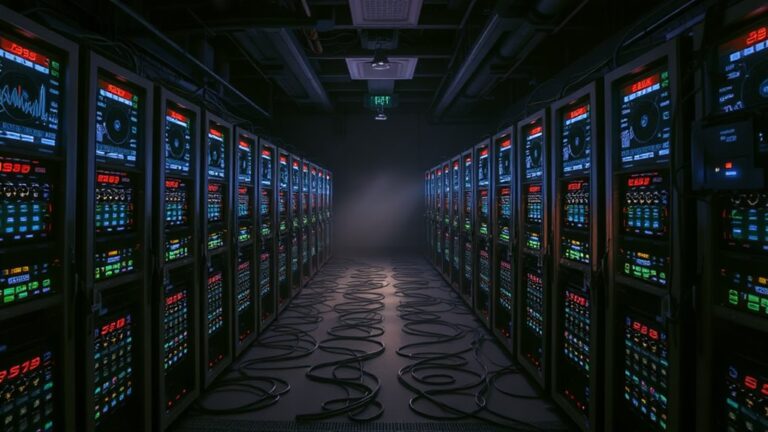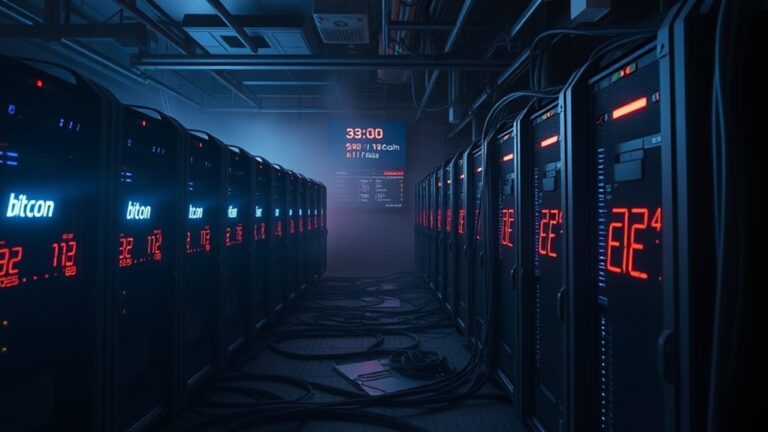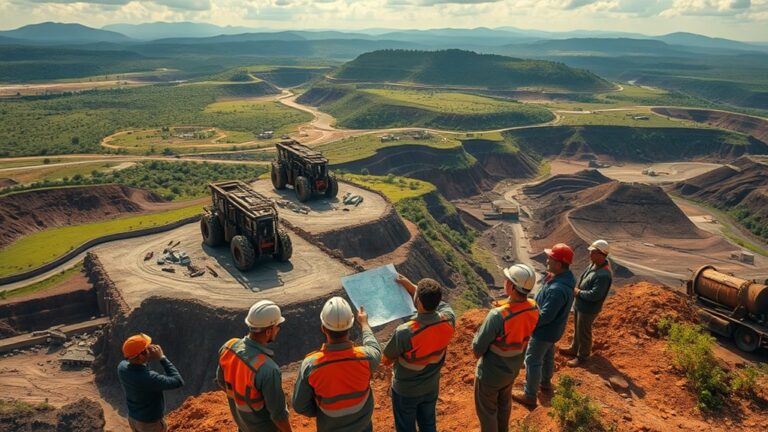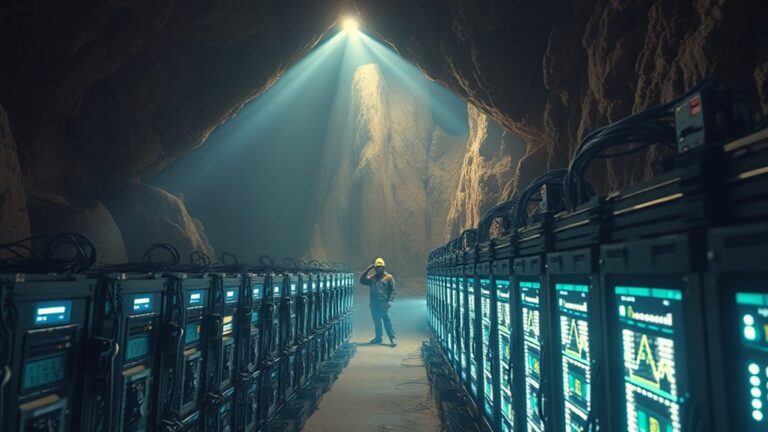
Electricity Costs and Mining Profitability: Top Strategies for Miners
Electricity costs are essential to mining profitability, as they account for about 80% of operating expenses. To mitigate financial risks, miners can adopt effective strategies such as selecting strategic locations with low energy rates, utilizing renewable energy sources, and implementing efficient hardware like ASICs. Additionally, time-of-use pricing and innovative cooling technologies can optimize electricity consumption. By adopting these measures, miners can enhance their profitability and sustainability, and further insights on these strategies can provide additional context.
Key Takeaways
- Miners should strategically select locations with low electricity rates, such as Texas and Quebec, to maximize profit margins.
- Implementing renewable energy sources like solar and wind can significantly reduce operational costs and enhance sustainability.
- Utilizing Application-Specific Integrated Circuits (ASICs) and innovative cooling technologies improves energy efficiency and reduces electricity consumption.
- Taking advantage of time-of-use pricing allows miners to operate during off-peak hours, minimizing electricity expenses.
- Regular energy monitoring helps identify consumption patterns and areas for improvement, optimizing overall cost management.
Impact of Electricity Prices on Mining Profitability

Electricity prices play an essential role in determining the profitability of mining operations, as they account for approximately 80% of a miner’s operating costs. This substantial cost factor makes electricity pricing critical for maintaining profit margins.
Fluctuating electricity prices introduce financial risks, often leading to increased operational costs that can diminish profitability. While some mining rigs have seen a decrease in break-even electricity prices, many remain close to average industrial rates.
Furthermore, miners face pressure to adopt more efficient practices and hardware to counteract high electricity costs. In addition, using renewable energy sources can help lower operational expenses and mitigate environmental impacts, making them an attractive option for miners seeking sustainability and cost-effectiveness in a competitive industry. Moreover, regions with affordable renewable energy sources offer advantages that can significantly enhance mining profitability.
Strategic Location Selection for Optimal Energy Costs

When selecting a location for mining operations, it is essential to take into account factors that influence energy costs and overall profitability. Strategic location choices can notably affect operational efficiency and expense management.
| Factors | Benefits | Examples |
|---|---|---|
| Renewable Energy Sources | Cost-effective, eco-friendly power | Hydroelectric, solar, wind |
| Low Electricity Rates | Higher profit margins | Texas, Quebec |
| Cool Climate | Reduced cooling costs | Canada, Iceland |
| Infrastructure Access | Stable operations | Proximity to power grids |
| Regulatory Stability | Long-term sustainability | Norway, Western Australia |
Additionally, miners must consider the historical impact of halvings on revenue to ensure their sustainability in fluctuating markets.
Techniques for Effective Electricity Cost Management
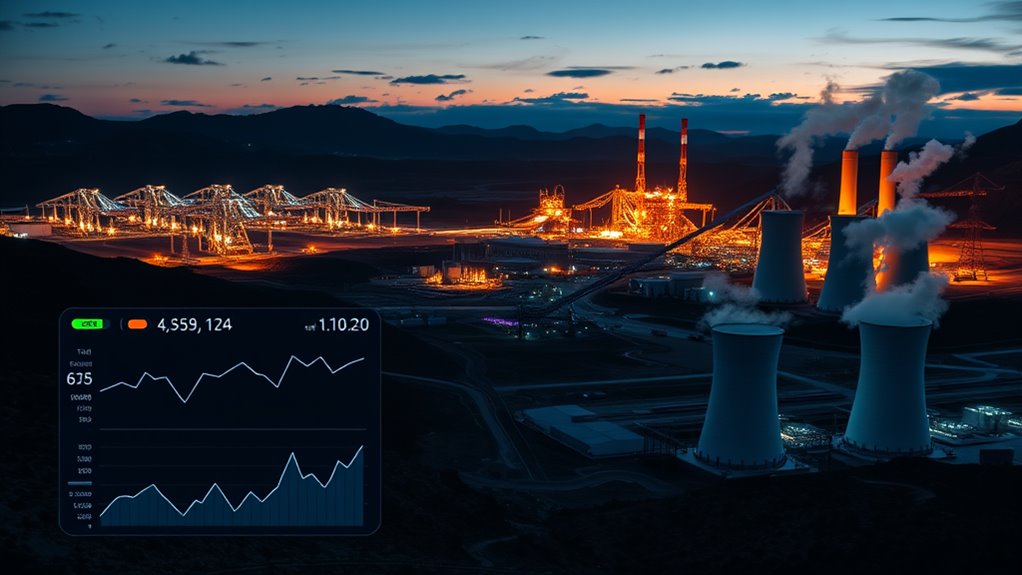
Effective management of electricity costs plays an essential role in enhancing the profitability of mining operations.
Miners can optimize hardware efficiency by utilizing Application-Specific Integrated Circuits (ASICs), which offer superior performance but require regular upgrades. Techniques such as overclocking and underclocking help balance energy use and hash rates, while high-efficiency power supplies reduce waste.
Implementing time-of-use pricing allows miners to operate during off-peak hours, lowering costs. Energy monitoring tools track consumption, identifying areas for improvement.
Regular maintenance of equipment guarantees efficient operation, while innovative cooling technologies, like liquid cooling, minimize energy consumption. Additionally, the shift towards renewable energy sources is crucial for reducing costs and enhancing sustainability in mining operations.
Integrating Renewable Energy Solutions
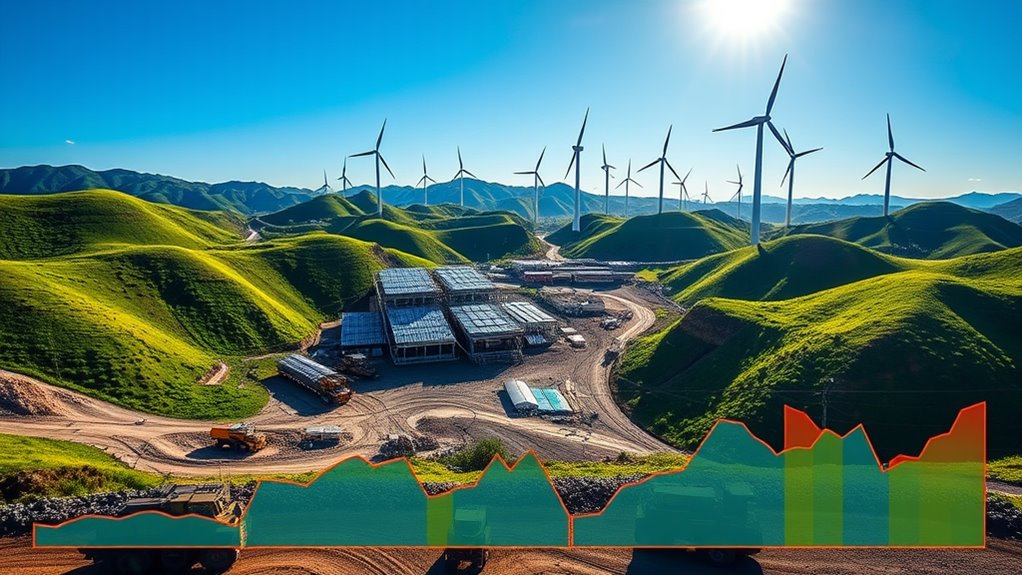
Integrating renewable energy solutions into mining operations presents a significant opportunity for enhancing sustainability and reducing costs. By reducing dependence on fossil fuels, mining companies can benefit from the growing cost-effectiveness of solar and wind energy.
These renewable sources not only improve operational margins but also mitigate risks related to fossil fuel price volatility. Solar energy is particularly beneficial for off-grid operations, while wind energy provides reliable power in suitable regions.
Additionally, hydropower and geothermal energy present viable options where applicable. The use of battery energy storage systems and microgrids can stabilize energy supply, further enhancing operational resilience.
Ultimately, adopting renewable energy aligns with stakeholder pressures for sustainable practices and can positively impact local communities.
Enhancing Technological Efficiency in Mining Operations

Enhancing technological efficiency in mining operations involves the strategic implementation of advanced technologies and automated systems. These innovations are essential for improving productivity and safety while reducing costs.
Strategically implementing advanced technologies in mining enhances productivity, safety, and cost-efficiency.
- Workforce Productivity: Streamlining tasks and eliminating overlaps maximizes resource utilization.
- Real-Time Location Systems (RTLS): This technology optimizes transportation routes and reduces idle times.
- Predictive Maintenance: Utilizing analytics extends equipment lifespan and minimizes downtime.
- Autonomous Systems: These enhance operational efficiency by increasing productivity and safety.
Frequently Asked Questions
How Do Electricity Prices Fluctuate Seasonally for Miners?
Electricity prices fluctuate seasonally due to increased demand during colder months, impacting supply. Weather conditions and regional energy infrastructure further influence these variations, requiring miners to adapt their operations and manage costs strategically to maintain profitability.
What Role Do Government Incentives Play in Mining Profitability?
“Every cloud has a silver lining.” Government incentives considerably enhance mining profitability by attracting investment, encouraging production, and fostering sustainable practices. However, careful design is essential to prevent unintended revenue losses for governments and guarantee equitable distribution.
How Can Miners Calculate Their Break-Even Electricity Cost?
Miners can calculate their break-even electricity cost by analyzing hardware efficiency, electricity price variances, Bitcoin price fluctuations, and network difficulty. This thorough approach enables them to determine the minimum electricity cost for maintaining profitability.
What Are the Environmental Impacts of Cryptocurrency Mining?
Cryptocurrency mining casts a shadow over the environment, with its voracious energy appetite, substantial carbon emissions, and significant electronic waste. This digital gold rush threatens ecosystems and exacerbates climate challenges, calling for urgent sustainable solutions.
How Does Electricity Sourcing Affect Public Perception of Mining?
Electricity sourcing influences public perception of mining primarily through its environmental impact. Utilizing renewable energy enhances sustainability, fostering positive views. In contrast, reliance on fossil fuels can lead to negative perceptions regarding ecological responsibility and community welfare.
Conclusion
In summary, understanding the impact of electricity costs on mining profitability is essential for miners in today’s digital age. By strategically selecting locations, managing electricity expenses effectively, and embracing renewable energy, miners can enhance their overall efficiency. Additionally, leveraging technological advancements can further optimize operations. As the mining landscape evolves, those who adapt to these strategies will likely thrive, much like the prospectors of the Gold Rush who sought opportunities in their ever-changing environment.

